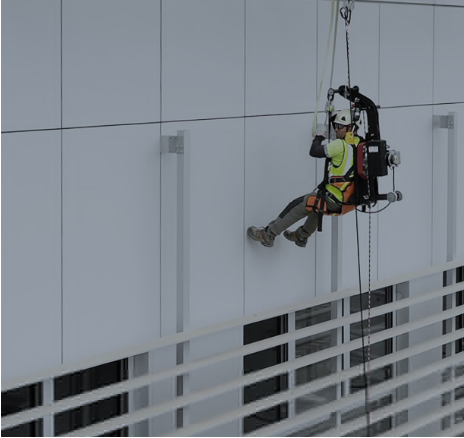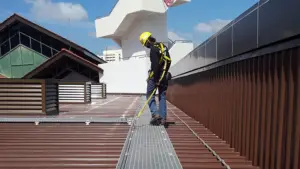
Exploring Innovative Building Maintenance Unit Solutions and Their Benefits for the Philippine Real Estate Industry
In the fast-paced world of modern architecture, ensuring the safety

In the realm of modern architecture and building maintenance, efficient access solutions are crucial for ensuring both safety and productivity. Rail systems for suspended equipment have revolutionized the way buildings are maintained and cleaned, offering versatile and customizable solutions tailored to various architectural needs.
Rail systems for suspended equipment are designed to provide safe and efficient access to heights, facilitating tasks such as building maintenance and facade cleaning. These systems are integral to ensuring that workers can operate securely at various elevations without compromising safety standards.
Rail systems offer numerous benefits, including enhanced safety measures for workers accessing heights and improved efficiency in building maintenance and cleaning tasks. Their customizable nature allows them to harmonize with architectural aesthetics while providing reliable and secure access solutions.
Selecting the appropriate rail system depends on several factors, including the specific height requirements, building structure, and aesthetic preferences. Project managers and architects must consider whether manual, motorized, or battery-powered systems best suit their operational needs. Case studies illustrate successful implementations of rail systems in diverse architectural environments, showcasing their versatility and effectiveness.
Looking ahead, rail systems continue to evolve with advancements in technology. Automation and remote monitoring capabilities are transforming how these systems are operated and maintained, enhancing both efficiency and safety. Sustainability considerations are also driving innovation in rail system design, with a focus on reducing environmental impact while maintaining performance and safety standards.
Rail systems for suspended equipment represent a cornerstone of modern building maintenance and access solutions. Their ability to provide safe, efficient, and customizable access to heights ensures that architectural integrity is preserved while operational needs are met. As innovations continue to shape the industry, these systems will play an increasingly vital role in maintaining the safety and functionality of buildings worldwide.

In the fast-paced world of modern architecture, ensuring the safety

Worker safety is a top priority in industries where fall

Imagine soaring through the lush forests and picturesque landscapes of

When working at heights, safety is a top priority. In

In the dynamic landscape of the Philippines, where weather conditions

Worker safety at elevated heights is a priority for industries
Copyright © 828 Cable System Inc. Philippines 2023 All Right Reserved